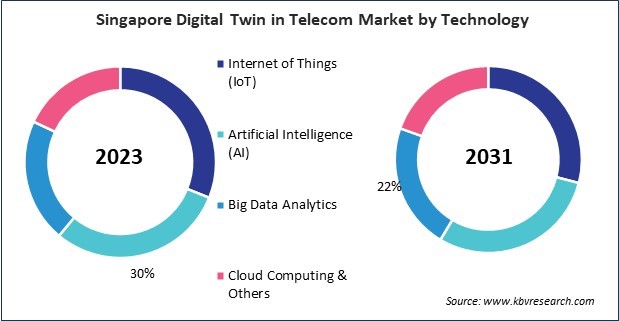The Asia Pacific Digital Twin in Telecom Market would witness market growth of 22.6% CAGR during the forecast period (2024-2031).
The China market dominated the Asia Pacific Digital Twin in Telecom Market by Country in 2023, and would continue to be a dominant market till 2031; thereby, achieving a market value of $124.4 Billion by 2031. The Japan market is registering a CAGR of 21.9% during (2024 - 2031). Additionally, The India market would obtain a CAGR of 23.4% during (2024 - 2031).

One of the most significant benefits of digital twins is their ability to facilitate real-time monitoring and continuous optimization of network performance. Telecom networks are highly dynamic, constantly changing traffic patterns, service demands, and user behaviors. With digital twins, telecom operators can continuously track the state of the network and make real-time adjustments as needed. This level of agility is essential in today’s competitive telecom landscape, where customers always expect high-quality, uninterrupted service.
Another important aspect of digital twins in telecom is their ability to enhance customer-centric service optimization. Telecom companies increasingly focus on delivering personalized customer experiences through customized service plans, tailored content delivery, or intelligent customer support solutions. Telecom operators can acquire a more comprehensive understanding of the manner in which customers interact with their services by analyzing customer behavior, network traffic patterns, and service usage data using digital twins. This allows them to identify areas where they can improve service delivery, such as optimizing network coverage, reducing latency, or enhancing data speeds in specific regions.
Australia is making strides in adopting digital twin technology in telecom, particularly as part of its broader push toward smart infrastructure and 5G. The Australian government’s 5G Strategy aims to roll out 5G technology nationwide to enable innovative healthcare, transport, and agriculture applications. Telecom operators like Telstra and Optus use digital twins to improve network planning and management processes. The government’s National Digital Economy Strategy and funding programs for smart cities and infrastructure projects support this trend. Digital twins allow telecommunications companies to predict network issues, minimize delays, and enhance customer satisfaction, thereby assisting Australia in preserving its competitive position in the global digital economy. Therefore, as telecom operators in Asia Pacific continue to scale up their networks and IoT applications, the demand for digital twins is expected to increase, positioning the region as a leader in the digital twin for telecom market.
Free Valuable Insights: The Global Digital Twin in Telecom Market is Predict to reach USD 1.6 Trillion by 2031, at a CAGR of 22.0%
Based on Organization Size, the market is segmented into Large Enterprises and Small & Medium-Sized Enterprises (SMEs). Based on Component, the market is segmented into Platform, Software, and Services. Based on Technology, the market is segmented into Internet of Things (IoT), Artificial Intelligence (AI), Big Data Analytics, and Cloud Computing & Others. Based on End User, the market is segmented into Telecom Operators, Communication Service Providers (CSPs), Mobile Network Operators (MNOs), Internet Service Providers (ISPs), and Other End User. Based on Deployment Type, the market is segmented into Cloud-Based, On-Premise, and Hybrid. Based on countries, the market is segmented into China, Japan, India, South Korea, Singapore, Malaysia, and Rest of Asia Pacific.
By Organization Size
By Component
By Technology
By End User
By Deployment Type
By Country
Our team of dedicated experts can provide you with attractive expansion opportunities for your business.

